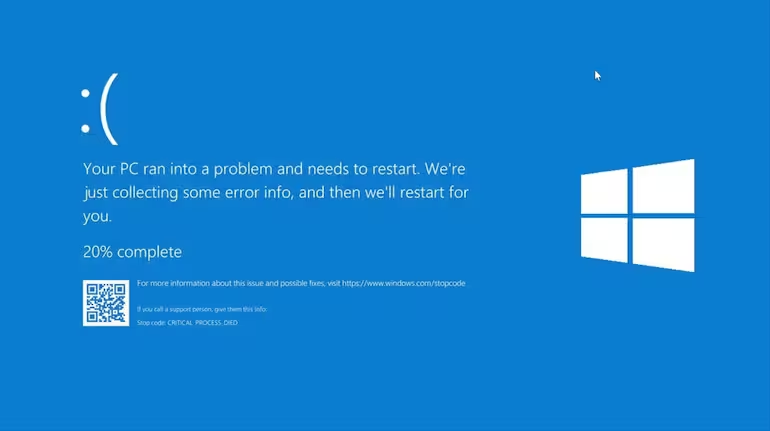Latest Trends in Web Development for 2025
Web development is an ever-evolving field, with new technologies and trends shaping the way businesses create digital experiences. To stay competitive and deliver cutting-edge solutions, it’s crucial to keep up with the latest advancements. Here are the must-have features and innovations in web development for 2025 that will help you stay ahead of the curve. As we move into 2025, web development continues to evolve at a rapid pace, introducing new technologies, methodologies, and design trends that are shaping the future of online experiences. Here are some of the most significant trends in web development that are expected to dominate in 2025:
Progressive Web Apps (PWAs)
PWAs are transforming the way users interact with websites. Combining the best of websites and mobile apps, PWAs offer faster load times, offline functionality, and a seamless user experience, making them a go-to choice for modern businesses. PWAs combine the best elements of websites and mobile applications. These apps are designed to offer a native app-like experience on the web, with features like offline access, fast loading times, and push notifications. PWAs improve the user experience by ensuring websites work seamlessly across all devices, even with intermittent internet connections. They are increasingly popular because they reduce the need for users to download and install apps while still offering a rich, engaging experience.
Voice Search Optimization
With the rise of smart speakers and voice assistants, voice search is becoming a standard. Websites optimized for voice search will rank higher on search engines, ensuring accessibility for a growing audience of voice users. With the increasing use of voice-activated devices like Amazon Alexa, Google Assistant, and Apple Siri, voice search is becoming an essential feature for modern websites. Web developers are focusing on optimizing websites to respond to voice queries. This includes using natural language processing (NLP) to create content and structures that are easily understood by voice search engines. Optimizing for voice search is crucial as more users rely on it for everyday searches and interactions with websites.
AI and Machine Learning Integration
Artificial Intelligence (AI) continues to revolutionize customer support. Integrating smart chatbots into websites enhances user engagement, provides instant assistance, and reduces response times. Artificial intelligence (AI) and machine learning are playing a significant role in web development by enabling smarter, more personalized user experiences. From AI-powered chatbots that can assist customers in real-time to personalized content recommendations based on user behavior, AI is improving user engagement. Machine learning algorithms can analyze user data to predict preferences, customize content, and improve website functionalities, ensuring a more tailored experience for each visitor.
Dark Mode
Dark mode has become a popular design choice due to its aesthetic appeal and its ability to reduce eye strain, especially in low-light environments. Many websites and apps now offer a dark mode option, and this trend is expected to grow in 2025. Web developers are designing websites with dark mode compatibility, ensuring users have the flexibility to choose their preferred visual style while still maintaining readability and usability.
Mobile-First Design
With mobile internet traffic now surpassing desktop traffic, mobile-first design has become a non-negotiable requirement for modern web development. Websites are being built with a mobile-first approach, meaning that they are optimized for smaller screens, touch interfaces, and mobile performance before being adapted for desktop use. This ensures a smooth and responsive experience across all devices, improving user satisfaction and search engine rankings.
AI-Powered Website Personalization
Websites are becoming more personalized than ever before, with AI-driven algorithms that tailor content to individual users based on their behavior, preferences, and past interactions. Personalized web experiences can include customized product recommendations, targeted content, and even personalized layouts. This trend not only enhances the user experience but also increases engagement and conversion rates.
Blockchain Technology
Blockchain is increasingly being integrated into web development, particularly for enhancing security, privacy, and transparency. Blockchain technology is known for its ability to securely store data in a decentralized way, making it a valuable tool for web developers aiming to protect user data, especially in industries like finance, healthcare, and e-commerce. In 2025, blockchain is expected to be more widely used for secure transactions, identity verification, and protecting sensitive data on websites.
Motion UI and Interactive Elements
As websites become more interactive, motion design and animations are becoming integral to creating engaging, dynamic user experiences. Motion UI enables web developers to integrate animations that respond to user actions, such as scrolling or clicking. These interactive elements help guide the user’s attention, create a sense of continuity, and make the site feel more alive. This trend is all about enhancing the overall experience through visual storytelling and engagement.
Serverless Architecture
Serverless architecture allows developers to build and run applications without managing servers. This approach enables web developers to focus more on writing code and less on managing infrastructure. By using cloud services to handle backend processes like data storage and processing, businesses can save on costs and improve scalability. This trend is gaining traction because of its flexibility and efficiency, particularly for applications with fluctuating demand.
5G Technology
The rollout of 5G networks is set to revolutionize the way websites and apps perform. 5G promises ultra-fast internet speeds and low latency, enabling websites to load much faster and offering a better overall experience for users. Developers will be able to leverage this technology to create more data-heavy, media-rich, and immersive websites without worrying about slow load times or connectivity issues. The availability of 5G will also make features like augmented reality (AR) and virtual reality (VR) more viable for web applications.












